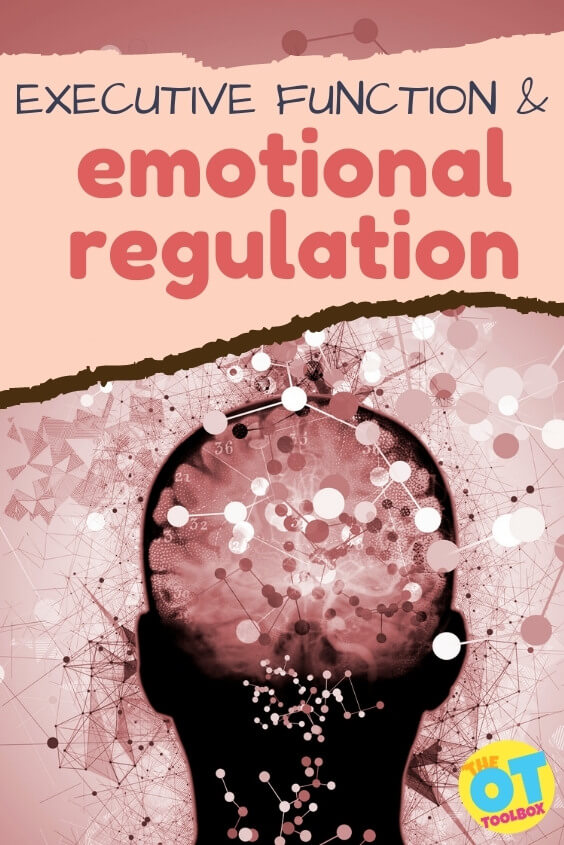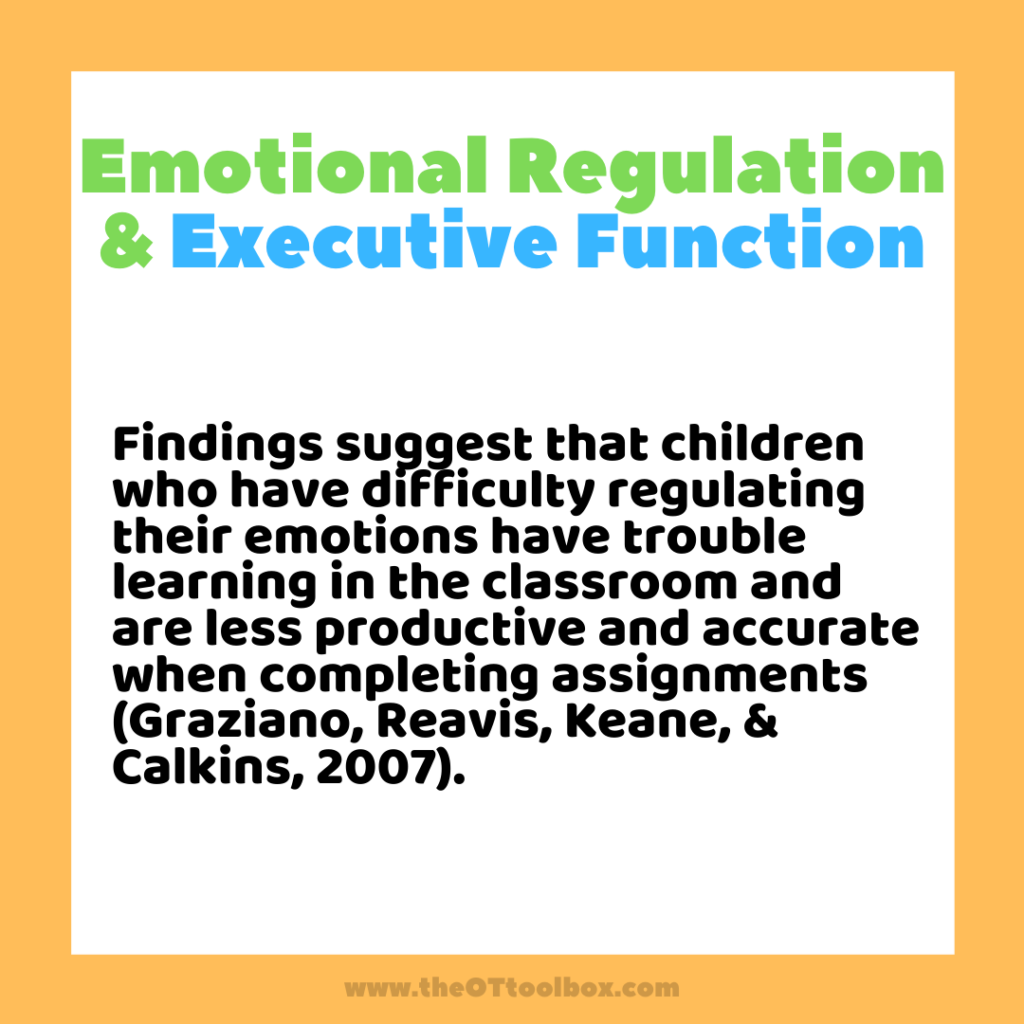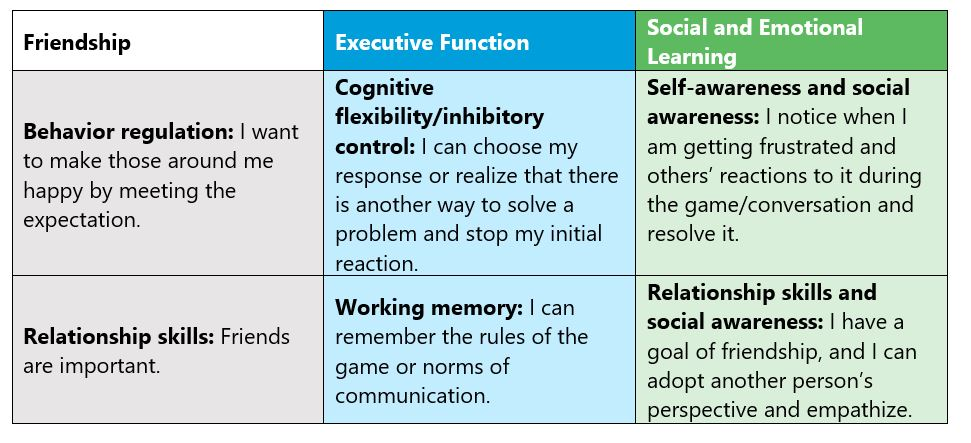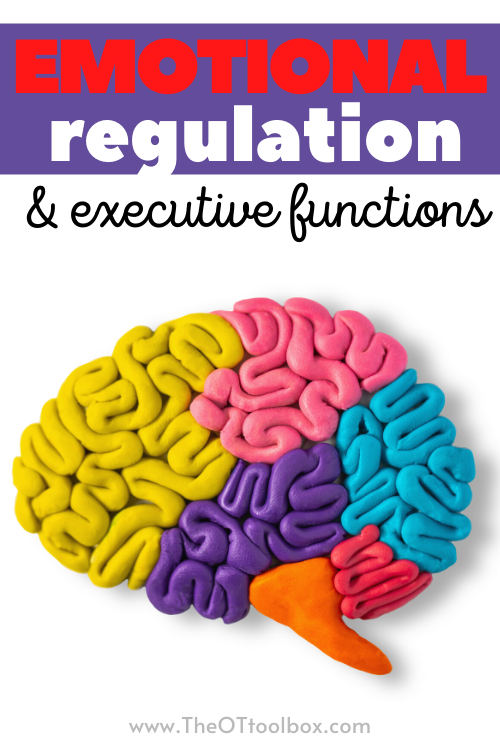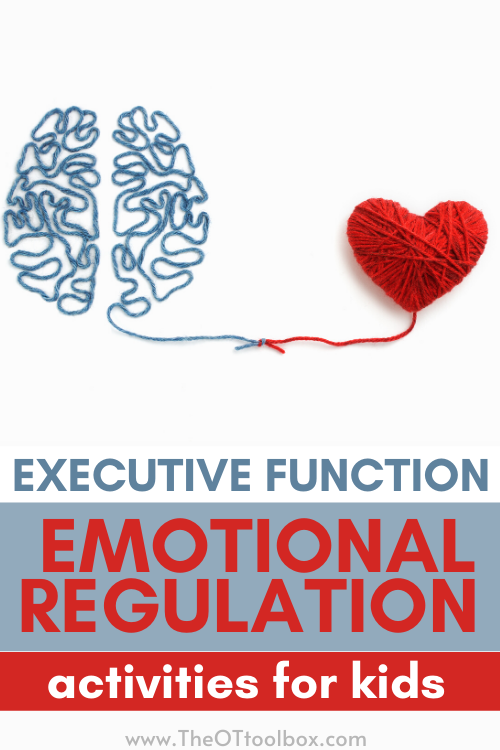Did you know that the limbic system plays an important role in everything we do? As occupational therapists, educators, and parents, understanding the role of the limbic system and function is not only practical information…it’s essential to understand when it comes to child development and day to day functioning as children learn, play, participate in household tasks, and interact with peers.
Today I am sharing really interesting information on the brain, the limbic system, and emotional regulation. I’m hoping to make this explanation of neuroscience super easy to understand so you can take this info and run with it!
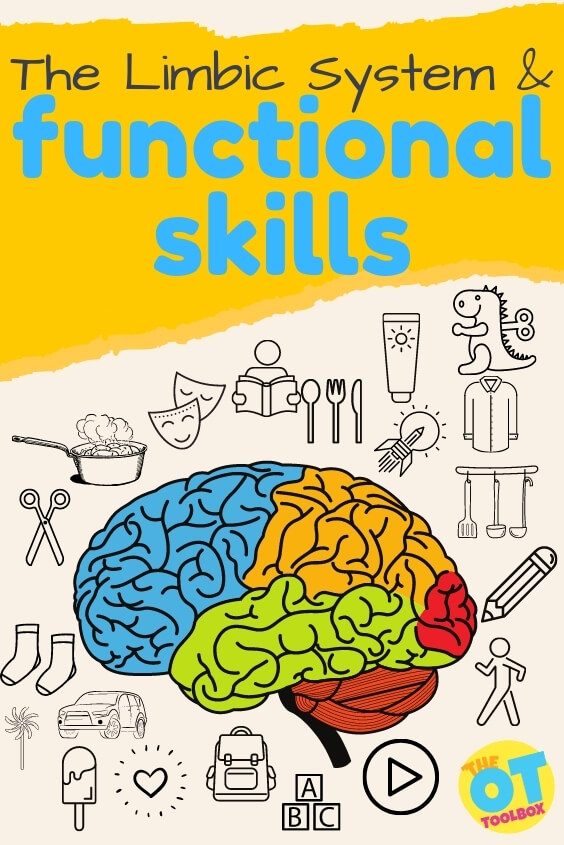
Let’s do this! Recently, we covered emotional regulation and executive functioning skills. When it comes to emotions, regulating behaviors, and the mental skills of executive functioning, you can see how all of these areas play a role in everything we do on a day to day basis. Social emotional learning is part of this. The limbic system is an important brain structure involved in each of these areas.
One creative tool to support emotional intelligence in kids is using these printable emotions play dough mats.
What is the Limbic System?
The limbic system is an area of the brain including several brain structures. These include the amygdala, the hippocampus, the hypothalamus, thalamus, and olfactory bulb. There are some really important hormones associated with these structures and their responses as well.
These structures and their hormones control functions such as emotions, behavior, motivation, sleep, appetite, olfaction, stress response. This is really interesting, because you may connect the dots with this list and see that social emotional skills, executive functioning, inner drives, and sensory processing (including the sense of smell and interoception) all centered in one place in the brain! (This is not to say that these are the only places in the brain that operate these functions as well.)
Generally speaking, the limbic system is the emotional brain.
It’s the space where survival behavior occurs. It’s the place in the brain that coordinated emotions, fear, aggression, basic inner drives, and episodic memories.
You know how the smell of freshly baked chocolate cookies brings back cozy memories of baking with Grandma all those years ago? Now, when you smell that ooey, gooey chocolate baked into chewy dough you might feel calm and at peace and picture yourself in your grandmother’s sunny kitchen when you were young. That’s the limbic system at work!
We all have limbic memories…maybe it’s the scent of vanilla that fosters a memory from childhood. Perhaps it’s the scent of glue that takes you back to peeling dried Elmers glue from the palm of your hand. Maybe it’s a certain scent that brings back scary or bad memories. Each one of us is unique in how those connections work in our brains!
“The emotional brain, the limbic system, has the power to open or close access to learning, memory, and the ability to make novel connections,” (Vail, 2017).
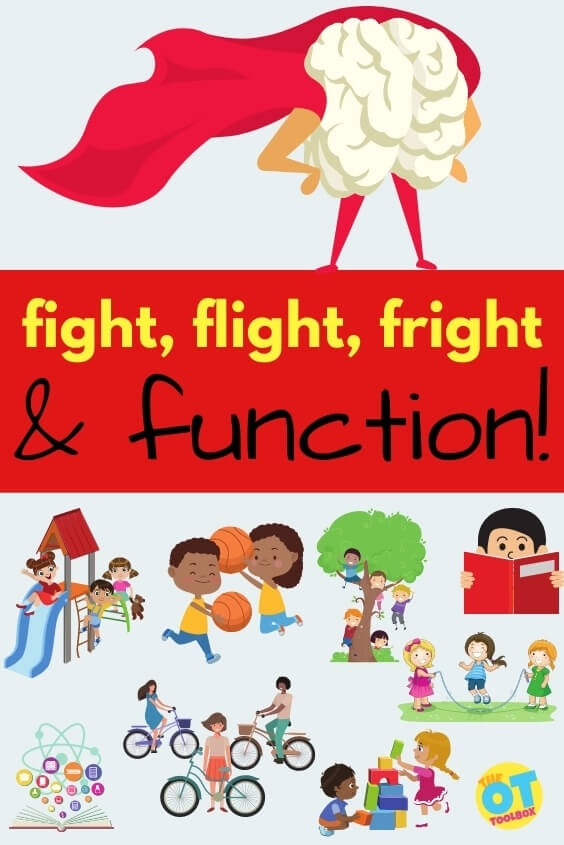
How the Limbic System and Function are connected
When it comes to participating in daily tasks, emotional response, behavioral regulation, the limbic system plays a primary role.
Here’s how this inner brain emotional powerhouse works when it comes to the limbic system and function:
The Limbic System is a Fright, Flight, and Freeze Response Center
The limbic system and function are connected by the fight, flight, freeze system of the brain.
A stressful situation sends signals to activate the amygdala, which quickly processes that information. It activates the hypothalamus which tells the adrenal gland to send adrenaline into the blood stream. The hypothalamus also activates other hormones to alert the pituitary gland.
Several hormones work together to keep the body on high alert, while suppressing other body systems. The adrenal glands release hormones such as epinephrine that work to raise blood pressure and heart rate, increase blood flow to muscles and organs, and elevate breathing rate. All of these systems keep you on high alert.
When we are on that high alert state, it is difficult to accomplish everyday tasks.
Think about being in an over-responsive state and trying to read a book, concentrate on completing complex math problems, solving difficult scenarios, or reading a research article. All of these tasks require attention, focus, and the ability to block out other sensory and environmental input. For children, accomplishing day-to-day tasks like getting dressed, completing the morning routine, interacting with peers, or learning can be a similar scenario. For some, that fight/flight/freeze state interrupts the ability to initiate a task or follow through to accomplish a task.
Let’s look at this another way: Have you ever been startled by a deer jumping out in front of your car while driving? You probably recall that whole-body sense of alertness and maybe felt prickly sensation all over your arms and that JUMP of acute awareness. When the deer pranced away, your body probably settled and while you were still feeling that sense of alarm, your body was already settling down. That’s because after a stress response is over or dismissed, hypothalamus activates the parasympathetic nervous system and inhibits the stress response.
Similarly, when in a flight/fright/freeze state, it’s impossible to accomplish routine, mundane, or novel tasks.
The limbic system impacts emotions
The limbic system and functioning are connected by our emotional response and behavioral regulation.
As our “Emotional Center”, the limbic system impacts behavioral response and emotional regulation in everything we do. This inner area of the brain are also deeply associated with emotions. The amygdala and the hippocampus, in particular are the emotional centers. These two structures connect via the thalamus.
Together, these connections play a role in emotional activities like friendship, affection, and mood. Regulation of emotions also occurs here: particularly emotions that have a role in survival such as aggression, love, fear, or anxiety.
These brain organs also help the brain interpret the emotional content of memories. The amygdala assigns emotional meaning to memories and helps the brain form fear-based memories. The hippocampus helps form sensory memories, which are memories associated with sensory input.
The limbic system regulates those automatic responses to emotional stimuli and plays an important role in behavior. Other places in the brain, such as the frontal regions (executive functioning center) are recruited for modulation of amygdala activity. This is when self-regulation happens.
When it comes to self-regulation, many children have a difficult time learning and achieving without help. In any given moment, a child (and an adult) encounters multiple situations and circumstances that require an awareness of self and others as well as the ability to have or gain self-control.
Generally speaking, a child should achieve an optimal level of self-awareness and mindfulness to identify their inner feelings and emotions and be ready to regulate themselves when the time comes. They need to learn strategies and techniques that work for them to assist them in leaving a less optimal level in order to get back to a “ready-to-go” level of regulation so they can accomplish tasks like brushing teeth, reading a book, interacting with a friend, crossing the street…the list can go on and on!
Is this brain talk fascinating? Or are your eyes glazing over??
How to facilitate the limbic system for function
The main thing to remember is that we CAN help kids with regulation and modulation of those inner brain workings, so the can play, learn, interact with others, and complete day to day tasks.
- We can teach them tools to help with the stress input and give them strategies so they are not in constant fright/flight/freeze mode.
- We can offer sensory input that provides the movement that their body needs so the nervous system has what it needs.
- We can give kids the words they can use so they can recognize their body’s emotions.
- We can show them strategies to help regulate.
- We can offer opportunities to connect with them.
- We can help them build a personal toolbox of emotional regulation strategies
- Trial calm down toys based on the child’s interests
- Play emotional regulation games to build skills in this area.
- Try self awareness games as additional supports for developing these skills.
Fostering connections and providing the right kind of tools facilitates emotional regulation, behavioral regulation, and functioning skills.
The Sensory Strategies Toolkit is powerful in working on the emotional regulation skills of kids. Not only does it offer resources to explain and better understand behaviors, but it offers solutions that kids want to use. It’s a goldmine in building social connections between friends, family, and social relationships…but also builds those essential brain connections, too!

Colleen Beck, OTR/L has been an occupational therapist since 2000, working in school-based, hand therapy, outpatient peds, EI, and SNF. Colleen created The OT Toolbox to inspire therapists, teachers, and parents with easy and fun tools to help children thrive. Read her story about going from an OT making $3/hour (after paying for kids’ childcare) to a full-time OT resource creator for millions of readers. Want to collaborate? Send an email to contact@theottoolbox.com.


